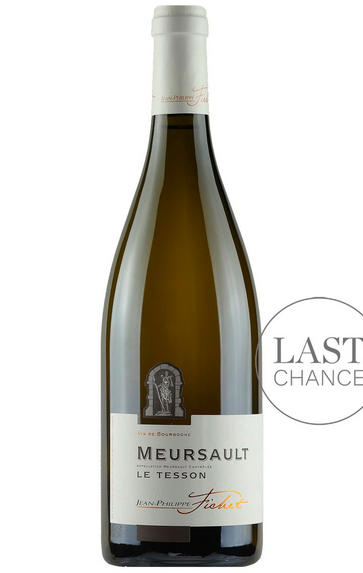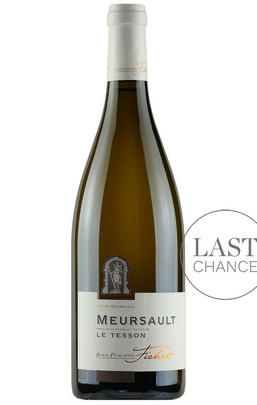
2016 Meursault, Le Tesson, Jean-Philippe Fichet, Burgundy

About this WINE

Jean-Philippe Fichet
Jean-Philippe Fichet made his first vintage in 1981. After a few challenges, he settled into his current – and rather splendid – cellars at Creux du Coche, by the Hôpital de Meursault.
About Jean-Philippe Fichet
Over the years, Jean-Philippe has built up an array of Meursaults, all from lieux-dits. He has no Premiers or Grands Crus in the village, though there’s a small parcel of Premier Cru Referts in Puligny.
In the vineyard
Jean-Philippe is very much a vigneron; it’s the time in the vineyard that counts. He believes that soil health is critical, and for 15 years he’s been making and applying his own compost to his vineyards.

Meursault
There are more top producers in Meursault than in any other commune of the Côte d’Or. Certainly it is the most famous and popular of the great white appellations. Its wines are typically rich and savoury with nutty, honeyed hints and buttery, vanilla spice from the oak.
Even though it is considerably larger than its southerly neighbours Chassagne and Puligny, Meursault contains no Grands Crus. Its three best Premiers Crus, however – Les Perrières, Les Genevrières and Les Charmes – produce some of the region’s greatest whites: they are full, round and powerful, and age very well. Les Perrières in particular can produce wines of Grand Cru quality, a fact that is often reflected in its price. Meursault has also been one of the driving forces of biodynamic viticulture in the region, as pioneered by Lafon and Leflaive.Many of the vineyards below Premier Cru, known as ‘village’ wines, are also well worth looking at. The growers vinify their different vineyard holdings separately, which rarely happens in Puligny or Chassagne. Such wines can be labelled with the ‘lieu-dit’ vineyard alongside (although in smaller type to) the Meursault name.
Premier Cru Meursault should be enjoyed from five to 15 years of age, although top examples can last even longer. Village wines, meanwhile, are normally at their best from three to 10 years.
Very occasionally, red Meursault is produced with some fine, firm results. The best red Pinot Noir terroir, Les Santenots, is afforded the courtesy title of Volnay Santenots, even though it is actually in Meursault.
- 305 hectares of village Meursault. The best vineyards include Clos de la Barre, Tesson, Chevalières, Rougeot, Narvaux
- 132 hectares of Premier Cru vineyards (17 in all). The finest vineyards include Les Perrières, Les Genevrières and Les Charmes
- Recommended producers: Comte Lafon, Arnaud Ente, Coche Dury, Guy Roulot, Jean-Philippe Fichet, Patrick Javillier, François Jobard, Michel Bouzereau
- Recommended restaurant: Le Chevreuil

Chardonnay
Chardonnay is often seen as the king of white wine grapes and one of the most widely planted in the world It is suited to a wide variety of soils, though it excels in soils with a high limestone content as found in Champagne, Chablis, and the Côte D`Or.
Burgundy is Chardonnay's spiritual home and the best White Burgundies are dry, rich, honeyed wines with marvellous poise, elegance and balance. They are unquestionably the finest dry white wines in the world. Chardonnay plays a crucial role in the Champagne blend, providing structure and finesse, and is the sole grape in Blanc de Blancs.
It is quantitatively important in California and Australia, is widely planted in Chile and South Africa, and is the second most widely planted grape in New Zealand. In warm climates Chardonnay has a tendency to develop very high sugar levels during the final stages of ripening and this can occur at the expense of acidity. Late picking is a common problem and can result in blowsy and flabby wines that lack structure and definition.
Recently in the New World, we have seen a move towards more elegant, better- balanced and less oak-driven Chardonnays, and this is to be welcomed.


Buying options
Add to wishlist
Description
Jean-Philippe feels this is the perfect example of Meursault. There is a nice touch of gunflint reduction on the nose, which leads into intense stone fruit before tightening up again with a twist of lime acidity on the finish. There is real elegance here, with a touch of toast and butter that lingers. A complete wine. Drink 2021-2028.
Adam Bruntlett, Burgundy Buyer
Fichet’s big step forward came in 2000 when he moved the whole operation to splendid cellars at Le Creux du Coche by the Hôpital de Meursault. Jean-Philippe is looking for purity in his wines. He deals mostly with lieux-dits in Meursault with just one Premier Cru in Puligny. Constantly experimenting and refining, his wines have real definition and individuality, with the individual terroirs clearly exposed. The wines are raised in barrel for the first year, using larger demi- muids for the lesser appellations, then assembled in tank. A maximum of 30 percent new oak is used on any cuvée. It is hard not to be infected by Jean- Philippe’s enthusiasm and positivity. Despite being 40 percent down in 2016, he remained upbeat, explaining that he sees the variability of vintages as part and parcel of a vigneron ’s lot. The losses could have been much worse, but the domaine is equipped with candles which protect against frost and they work hard in the vines to keep grass low to reduce the risk of frost damage. He declared himself happy with the quality, but feels it is a vintage which will require patience on the part of the consumer, as many of the wines will be more austere in youth than those of 2015.
wine at a glance
Delivery and quality guarantee